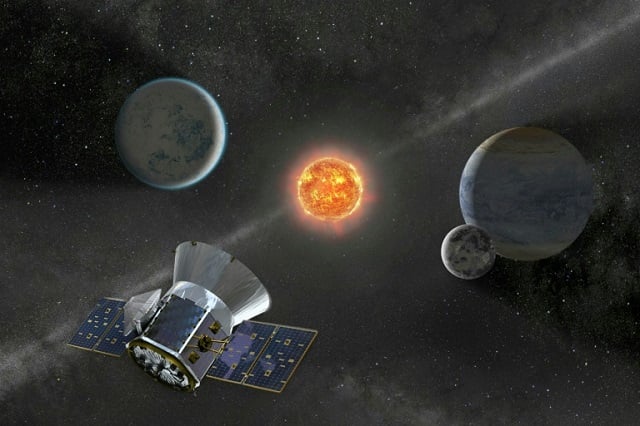
WASHINGTON: Astronomers dedicated to the search for extraterrestrial intelligence (SETI) have announced a new collaboration with scientists working on a NASA telescope.
So has alien-hunting finally earned its stripes as a scientific discipline?
To find out, AFP spoke to scientist Jill Tarter who has devoted her life to searching for signals emanating from distant galaxies and who inspired the character played by Jodie Foster in the 1997 film Contact.
"We've spent a lot of time over the years trying to distance ourselves from pseudoscience and UFOs," said Tarter, 75, the Chair Emeritus for SETI Research at the SETI Institute in California, founded in 1984 and funded by Silicon Valley magnates including the late Paul Allen.
"We've done the scientific exploration that we're engaged in a way that scientists in other disciplines do their work, and we published the papers and we've gone through the peer reviews, and we built interesting instrumentation," she continued.
"So I think that it is far more credible today than it once was."
Under an agreement announced Wednesday at the International Aeronautical Congress, scientists working on NASA's Transiting Exoplanet Survey Satellite (TESS) have teamed up with Breakthrough Listen, an extraterrestrial intelligence search founded in 2015 by Russian billionaire and internet pioneer Yuri Milner.
Two advances have helped the field to cross over from the realm of science fiction: the first was the discovery in 1995 of the first exoplanet or planet outside of our star system, a finding which was just awarded the Nobel prize, and more than 4,000 more have been confirmed since.
The second was the discovery of extremophiles, which are organisms capable of surviving in extremes of temperature or pressure.
"If you know that there's this potentially habitable real estate out there, how can you not ask the question is any of it actually inhabited?" said Tarter.
First all-female spacewalk now later this week, says NASA
Astronomers interested in SETI use telescopes, both optical and radio, to scan the sky for the slightest signs that would indicate life forms that are intelligent.
But the truth is they don't know exactly what they're looking for.
"We don't know how to find intelligence. We don't even know how to define it very well," said Tarter.
"But what all of us are doing is using technology as a proxy for intelligence" she added, meaning evidence of something engineered by intelligent life.
That could be a TV or radio signal that reaches us, just as the signals from our planet are continuously emitted into space.
Or astronomers might be able to make out strange variations in the light signatures of distant planets, which could indicate the presence of enormous orbital structures like space stations.
In the future, the idea would be also to analyse the chemical composition of other planets to look for signs of biological life -- like on Earth where everything from bovine flatulence to photosynthesis contributes to the mix of our atmosphere.
"We might see some sort of disequilibrium chemistry that we can't explain any other way," said Tarter adding
"that takes big telescopes" -- like NASA's TESS project.
Does humanity have a better chance of finding life on Mars in the form of microbes, than intelligent aliens in another galaxy?
"I think either one of them could be the winning hand," says the astronomer.
NASA aims for first manned SpaceX mission in first-quarter 2020
Tarter has been hunting for aliens since she was a graduate student, but she insists she's never been discouraged.
"People who do this kind of work, they don't get out of bed in the morning saying, I'm going to find a signal today because you'll probably go to bed disappointed," she said.
"But they do get out of bed in the morning saying, I'm going to figure out a way to do the search."
But even if we receive a signal from another civilisation 100,000 light-years away, what good would it do us, since we would not be able to visit and it would take 100,000 years to send a message back?
"Do you read Shakespeare, or the ancient Greeks, or the ancient Romans? We learned an enormous amount from them, even though we can't ask them questions," said Tarter.
"So that's information that's propagated forward in time. I think that's a pretty good model for what communication with a distant technology might be."






















































COMMENTS
Comments are moderated and generally will be posted if they are on-topic and not abusive.
For more information, please see our Comments FAQ